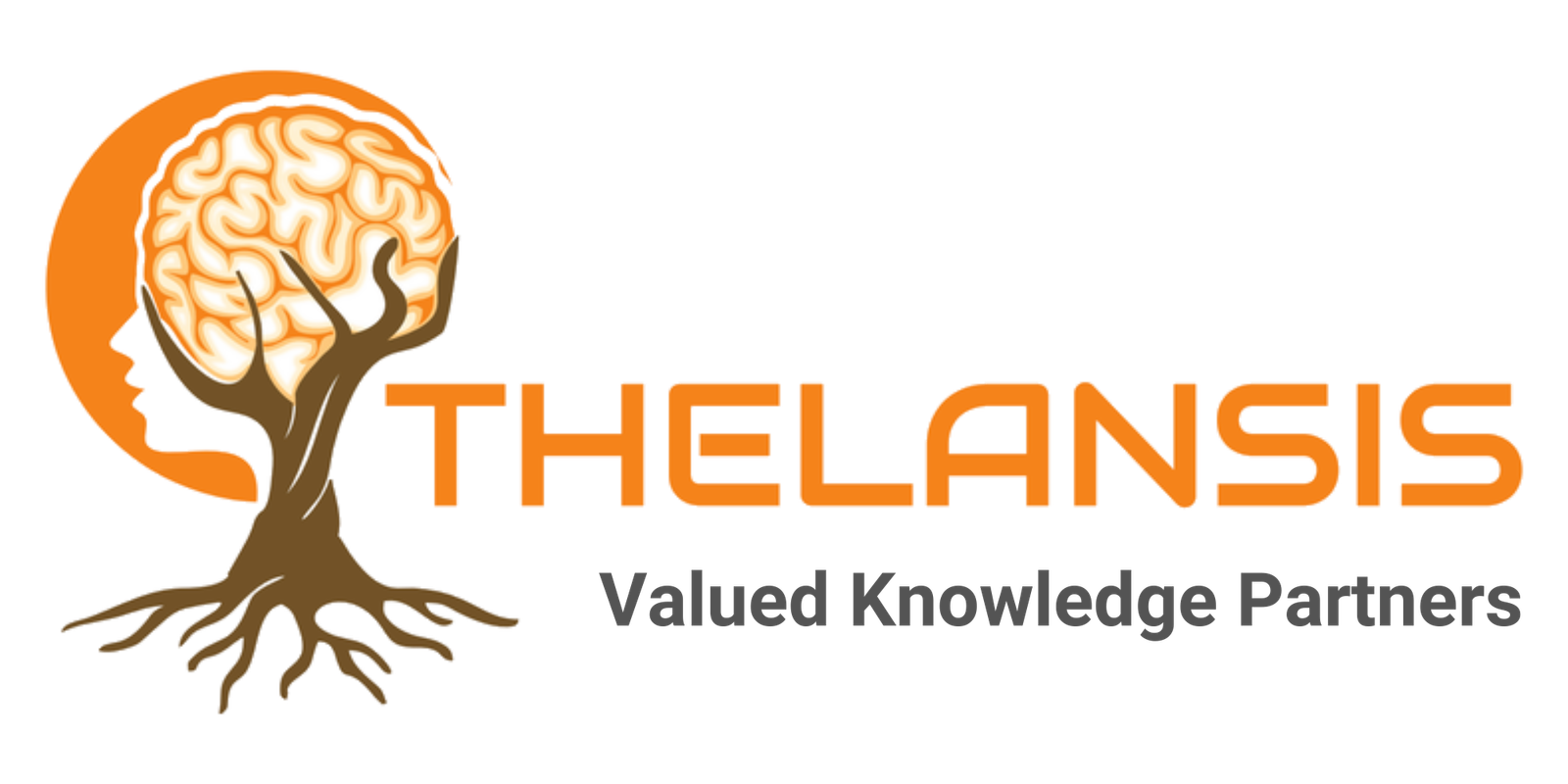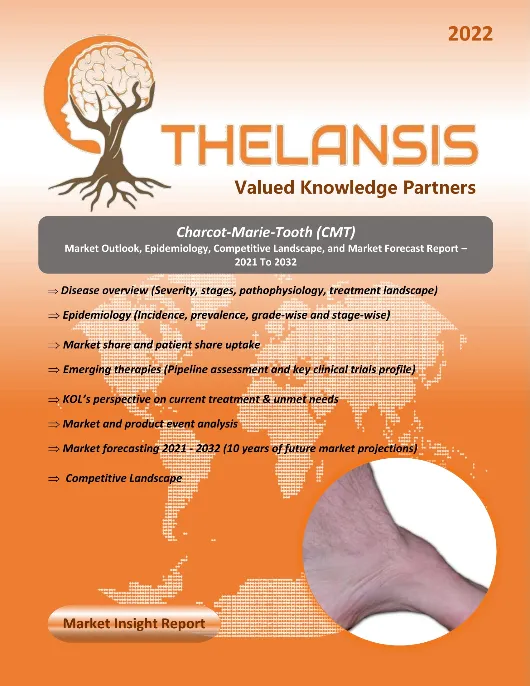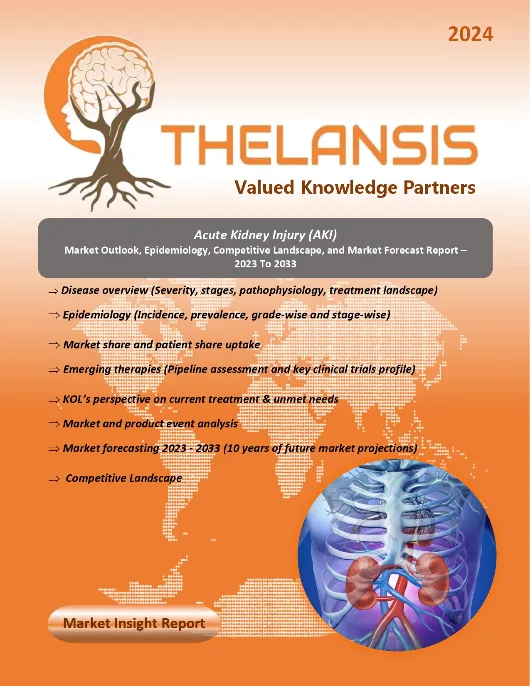Bipolar Depression – Epidemiology Insights and Forecast Report – 2020 To 2040
- Published Date : November 19, 2024
- Updated On : June 19, 2025
- Pages : 52
Bipolar Depression Epidemiology Insights
Thelansis’s “Bipolar Depression Epidemiology Insights and Forecast Report – 2020 To 2040″ provides an analysis of disease burden, characterized by disease definition, prevalence, incidence, diagnosed cases, severity, comorbidities, and clinical manifestations. Potential patient flow dynamics in disease burden are driven by shifts in demographic indicators and their correlation with age and gender distribution over time. Changes in the reported cases and long-term survival of patients may depend on diet, lifestyle, comorbid conditions, and the availability of interventions or therapies.
Bipolar Depression Overview
Bipolar depression is frequently misdiagnosed as unipolar depression due to the overlap in clinical symptoms between these two conditions. Patients may not recognize their ‘high’ periods as illness, leading them to seek assistance only during depressive episodes. As a result, bipolar depression often goes unrecognized for several years, especially in cases of bipolar II disorder, where hypomania episodes can be mistaken for a return to normal mood after depression. In over 50% of bipolar disorder cases, depression is the initial manifestation of the illness, creating a diagnostic challenge in distinguishing it from unipolar depression. The symptom profile includes psychomotor retardation, ‘atypical’ features such as increased appetite and excessive sleep (reverse neurovegetative), and sometimes psychotic symptoms. Episodes of bipolar depression tend to be more rapid in onset, more frequent, and shorter in duration than unipolar depression. However, in practice, there is often a mix of manic and depressive symptoms, making it challenging to differentiate unipolar and bipolar depression, particularly in the absence of obvious prior manic episodes. Clinical management is thus influenced by diagnostic uncertainty.
Geography coverage:
G8 (United States, EU5 [France, Germany, Italy, Spain, U.K.], Japan, and China)
Deliverables format and updates*:
- Access to an interactive epidemiology platform with downloadable Excel and PPT files.
- Global findings
- G8 findings
- Regional findings
- Country-specific findings
- Others*: regular updates, customizations, epidemiologist support
*As per Thelansis’s policy, we ensure that we include all the recent updates before releasing the content. Countries, subpopulations, and years of forecast can be customized as per client requirements.
Key business questions answered:
- 20-year historical and forecast data (2020–2040)
- Disease definition based on globally accepted and latest criteria (e.g., ICD-10 codes)
- Granular patient population coverage by year and geography
- Detailed segmentation by age, gender, subpopulations, comorbidities, line of therapies, etc.
- Patient funnels
- Country comparisons
- Relevant clinical variables (e.g., staging/classification/severity)
Insights driven by robust research and estimates:
- Published literature (e.g., peer-reviewed journal articles, registries, national surveys)
- Primary market research with KOLs
- RWD analysis using claims and EHR datasets
- Proprietary mathematical models (e.g., incidence-survival model; incidence- recurrence/progression-survival model)
Bipolar Depression Epidemiology Insights
Thelansis’s “Bipolar Depression Epidemiology Insights and Forecast Report – 2020 To 2040″ provides an analysis of disease burden, characterized by disease definition, prevalence, incidence, diagnosed cases, severity, comorbidities, and clinical manifestations. Potential patient flow dynamics in disease burden are driven by shifts in demographic indicators and their correlation with age and gender distribution over time. Changes in the reported cases and long-term survival of patients may depend on diet, lifestyle, comorbid conditions, and the availability of interventions or therapies.
Bipolar Depression Overview
Bipolar depression is frequently misdiagnosed as unipolar depression due to the overlap in clinical symptoms between these two conditions. Patients may not recognize their ‘high’ periods as illness, leading them to seek assistance only during depressive episodes. As a result, bipolar depression often goes unrecognized for several years, especially in cases of bipolar II disorder, where hypomania episodes can be mistaken for a return to normal mood after depression. In over 50% of bipolar disorder cases, depression is the initial manifestation of the illness, creating a diagnostic challenge in distinguishing it from unipolar depression. The symptom profile includes psychomotor retardation, ‘atypical’ features such as increased appetite and excessive sleep (reverse neurovegetative), and sometimes psychotic symptoms. Episodes of bipolar depression tend to be more rapid in onset, more frequent, and shorter in duration than unipolar depression. However, in practice, there is often a mix of manic and depressive symptoms, making it challenging to differentiate unipolar and bipolar depression, particularly in the absence of obvious prior manic episodes. Clinical management is thus influenced by diagnostic uncertainty.
Geography coverage:
G8 (United States, EU5 [France, Germany, Italy, Spain, U.K.], Japan, and China)
Deliverables format and updates*:
- Access to an interactive epidemiology platform with downloadable Excel and PPT files.
- Global findings
- G8 findings
- Regional findings
- Country-specific findings
- Others*: regular updates, customizations, epidemiologist support
*As per Thelansis’s policy, we ensure that we include all the recent updates before releasing the content. Countries, subpopulations, and years of forecast can be customized as per client requirements.
Key business questions answered:
- 20-year historical and forecast data (2020–2040)
- Disease definition based on globally accepted and latest criteria (e.g., ICD-10 codes)
- Granular patient population coverage by year and geography
- Detailed segmentation by age, gender, subpopulations, comorbidities, line of therapies, etc.
- Patient funnels
- Country comparisons
- Relevant clinical variables (e.g., staging/classification/severity)
Insights driven by robust research and estimates:
- Published literature (e.g., peer-reviewed journal articles, registries, national surveys)
- Primary market research with KOLs
- RWD analysis using claims and EHR datasets
- Proprietary mathematical models (e.g., incidence-survival model; incidence- recurrence/progression-survival model)
1. Key Findings and Analyst Commentary
- Key trends: market snapshots, SWOT analysis, commercial benefits and risk,etc.
2. Disease Context
- Disease definition, classification, etiology and pathophysiology, drug targets,etc.
3. Epidemiology
- Key takeaways
- Incidence / Prevalence
- Diagnosed and Drug-Treated populations
- Comorbidities
- Other relevant patient segments
4. Market Size and Forecast
- Key takeaways
- Market drivers and constraints
- Drug-class specific trends
- Country-specific trends
5. Competitive Landscape
- Current therapies
- Key takeaways
- Dx and Tx journey/algorithm
- Key current therapies – profiles and KOL insights
- Emerging therapies
- Key takeaways
- Notable late-phase emerging therapies – profiles, launch expectations, KOL insights
- Notable early-phase pipeline
6. Unmet Need and TPP Analysis
- Top unmet needs and future attainment by emerging therapies
- TPP analysis and KOL expectations
7. Regulatory and Reimbursement Environments (by country and payer insights)
8. Appendix (e.g., bibliography, methodology)
Table of contents (TOC)
1. Key Findings and Analyst Commentary
- Key trends: market snapshots, SWOT analysis, commercial benefits and risk,etc.
2. Disease Context
- Disease definition, classification, etiology and pathophysiology, drug targets,etc.
3. Epidemiology
- Key takeaways
- Incidence / Prevalence
- Diagnosed and Drug-Treated populations
- Comorbidities
- Other relevant patient segments
4. Market Size and Forecast
- Key takeaways
- Market drivers and constraints
- Drug-class specific trends
- Country-specific trends
5. Competitive Landscape
- Current therapies
- Key takeaways
- Dx and Tx journey/algorithm
- Key current therapies – profiles and KOL insights
- Emerging therapies
- Key takeaways
- Notable late-phase emerging therapies – profiles, launch expectations, KOL insights
- Notable early-phase pipeline
6. Unmet Need and TPP Analysis
- Top unmet needs and future attainment by emerging therapies
- TPP analysis and KOL expectations
7. Regulatory and Reimbursement Environments (by country and payer insights)
8. Appendix (e.g., bibliography, methodology)


